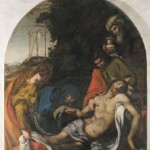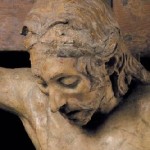According to sources, the first foundation of a chapel dates back to the 7th century. The original complex, whose first patrons were the Ubaldini family, was independent until was it donated in 1212 to the Franciscans on the occasion of the saint’s passage throughj Borgo San Lorenzo. It was included in the parish of San Michele al Bosco and was later named San Francesco al Lago or al Bosco.
Saint Bonaventure of Bagnoregio, general of the Franciscan Order, was there some years later and received in 1273 the cardinal investiture by Pope Gregory X there. His exemplum virtutis is famous: the friar, who was caught washing the dishes by the papal legates sent to deliver his cardinal’s insignias, did not stop working and asked them to leave the paraments on a small cornel tree nearby.
The 1349 plague led the Franciscans to abandon the convent in a period when the Ubaldini’s power was slowly dying while that of the Medici family, originally from the Mugello, was increasingly asserting itself. In fact, they had extensive properties in the area, including the large fortress-villas of Trebbio and Cafaggiolo.
Around the 1420s, Cosimo the Elder purchased the land where the religious complex still stands today with the surrounding woods. Having obtained its patronage, he began modernization works. The project was entrusted to Michelozzo, together with works for Trebbio and Cafaggiolo, as attested by Vasari’s biography dedicated to the famous architect.










